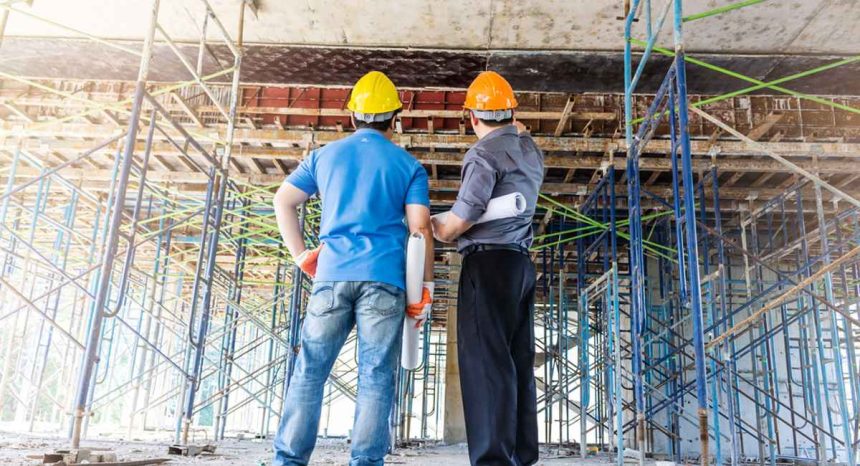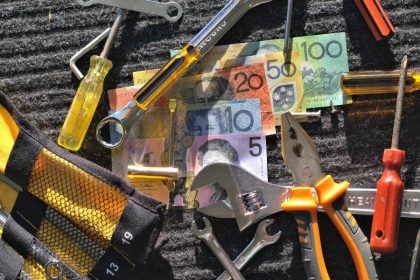Ministers are fighting back against natural disasters with a new commitment to make Australia’s built environment “climate-resilient”.
Last Friday, Australia’s building ministers agreed to make climate resilience a priority for the Australian Building Codes Board (ABCB), promising to strengthen buildings against worsening extreme weather events and prepare the country to hit net zero by 2050.
The move is a direct response to recommendations from the National Natural Disaster Arrangements Royal Commission in 2020 and paves the way for the board to draw up future climate-focused standards for commercial and residential construction in the coming years.
According to Ministers, the move will mean “fewer Australians and communities displaced by natural disasters, lower rebuilding costs, quicker recovery and more builders and tradespeople available to build the new homes Australia needs”.
“We know that the severity and frequency of natural disasters are on the rise due to climate change, so ensuring future homes are better able to withstand disasters is key,” said Minister for Emergency Management Murray Watt.
“This decision will deliver stronger homes, safer communities and more confidence for homebuyers.”
Analysis from financial advisor KPMG revealed that the nation’s current approach to infrastructure saw 70 per cent of the country impacted by increasingly frequent natural disasters from 2022-2023, costing Aussies over four billion dollars every year.
Ministers also agreed to include a voluntary pathway for commercial buildings to calculate and report on embodied carbon in the 2025 National Construction Code, with the ABCB tasked to investigate how to incorporate a future minimum standard in the NCC 2028.
Minister for Sustainable Building and Construction Rebecca Vassarotti said the new nationally consistent approach gives construction the “right foundations” to hit net-zero emissions for commercial buildings.
“Across Australia, new buildings represent 10 per cent of overall carbon emissions. Most of these emissions come from the materials, transport and construction associated with new buildings,” said Minister Vassarotti.
“Currently, there is no national standard for measuring what we call ’embodied carbon’, that is, the emissions that come from building materials, transport, construction, repairs, and renovations.
“That’s why I have proposed updates to the National Construction Code to bring every state and territory under the same system to start measuring carbon emissions in construction of commercial buildings.”
According to the minister, the latest agreement allows Labor to leave a legacy of “high-performing affordable” buildings that “work with, not against, the natural environment”.
“As the climate gets hotter and as our energy demands increase, a building’s ability to withstand extreme weather events will become paramount to the health and safety of the people in it,” she added.
Quality and safety of buildings were also key discussion points, with ministers agreeing to consider a national scheme to support the safety and reliability of building products.
Will the changes push up construction costs?
With construction responsible for one fifth of all carbon emissions in Australia, the focus on climate resilience has been welcomed by industry officials.
But with this year’s National Construction Code changes seeing prices skyrocket when they were introduced in Victoria last month, builders are understandably worried about the potential financial burden lumped onto businesses.
Since May 1 any new home submitted for planning approvals has been required to be seven-star energy efficient, typically requiring better orientation for sunlight, more double-glazing, insulation and often solar panels or more efficient appliances.
The Housing Industry Association originally believed the change would see a typical increase of just $10,000 in home building budgets, but following the cutoff date, that figure was estimated to be closer to $25,000 for most new homes—and higher still for some builds.
With builders bearing the brunt of the cost, buyers are now paying more than $115,000 extra for a typical build compared to the same time in 2020.
In the hope of avoiding similar price hikes with these latest climate resilience changes, Ministers made it clear that the ABCB would be working with industry, government and community members to keep updates “cost-effective, practical and fir-for-purpose”, but the impacts remain to be seen.
Minister Vassarotti said the single national approach would go a long way to “removing confusing and administrative costs” from potentially having to comply with multiple state-specific schemes.
Stephen Jones, Minister for Financial Services, said the updated buildings might even drop the cost of insurance premiums for buyers.
“Insurance measures the risk of damage in severe weather. Safer, stronger, more resilient buildings are less susceptible to damage in floods and fires,” said Jones.
“That means families are safer and there’s downward pressure on insurance costs.”




